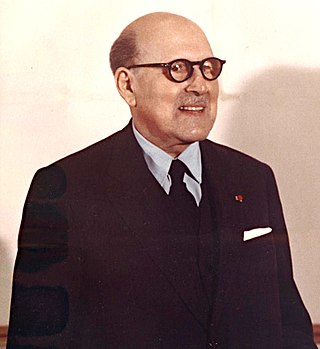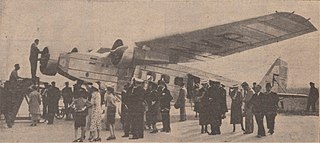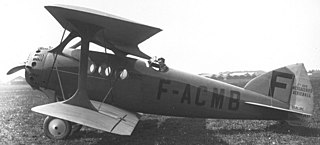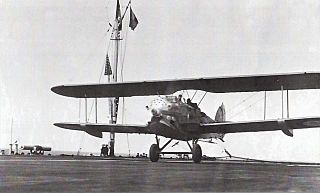| SEA IV | |
|---|---|
 | |
| General information | |
| Type | Fighter |
| Manufacturer | Société d'Etudes Aéronautiques (SEA) |
| Designer | |
| Number built | 115 |
| History | |
| First flight | 1918 |
The SEA IV was a French two-seat military aircraft of World War I and the immediate post-war era.
| SEA IV | |
|---|---|
 | |
| General information | |
| Type | Fighter |
| Manufacturer | Société d'Etudes Aéronautiques (SEA) |
| Designer | |
| Number built | 115 |
| History | |
| First flight | 1918 |
The SEA IV was a French two-seat military aircraft of World War I and the immediate post-war era.
The SEA IV was designed and built in 1917 by Henry Potez, Louis Coroller, and Marcel Bloch. It was a derivative of their previous SEA II design, equipped with a more powerful Lorraine engine of 261 kW (350 hp). It made its first flight during the first quarter of 1918, probably near Plessis-Belleville. It was initially tested by Gustave Douchy, a flying ace of 9 victories, then by the pilots of the Centre d'essais en Vol at Villacoublay. The "Ministère de l'Armement et des Fabrications de guerre" (Ministry of Armament and War Production) soon placed an order for 1,000 machines, making the SEA IV the first Dassault-designed aircraft to reach production. [1]
On August 24, 1918, General Duval, commander of Aéronautique at General Headquarters foresaw the need for two variants to equip the escadrilles at the beginning of 1919: the SEA IV A2 for observation and the SEA IV C2 for fighting. In October, General Headquarters ordered the commissioning of a flotilla to operate these aircraft, and therefore required production to reach 200 planes per month during the first quarter of 1919, to have a force of 400 on hand by April 1. [1]
The Armistice, however, meant that the initial order of 1,000 was cancelled, and in the end, only 115 examples were built. These C2s were used for a number of years by several escadrilles in the "Regiments d'Aviation" at Le Bourget. [1]
A further 25 were built by Aéroplanes Henry Potez as the Potez VII, a luxury touring aircraft, and one further example formed the basis of a racing aircraft. [1]
Data from French aircraft of the First World War, [1] Aviafrance:SEA IV [2]
General characteristics
Performance
Armament
Related lists

Marcel Dassault was a French engineer and industrialist who spent his career in aircraft manufacturing. He was also involved in politics, serving intermittently more than three decades in both houses of the French Parliament from 1951 until his death in 1986.
The Société d'Études Aéronautiques (SEA) was a French aircraft manufacturer founded in 1916 by Henry Potez, Marcel Bloch, and Louis Coroller at Suresnes.

The Bloch MB.210 and MB.211 were the successors of the French Bloch MB.200 bomber developed by Société des Avions Marcel Bloch in the 1930s and differed primarily in being low wing monoplanes rather than high wing monoplanes.

The Bloch MB.162 was a French four-engine, long-range bomber developed by Société des Avions Marcel Bloch in the late 1930s. Only a single prototype was built; after capture by German forces, it was pressed into service with the Luftwaffe as a transport.

The Nieuport 27 was a World War I French sesquiplane fighter aircraft designed by Gustave Delage. The 27 was the last of the line of Nieuport "V-strut" single seat fighters that began with the Nieuport 10 of 1914. Operational examples supplemented the very similar Nieuport 24 and 24bis in operational squadrons in late 1917 and many would also be used as advanced trainers.

The Bloch MB.120 was a French three-engine colonial transport aircraft built by Société des Avions Marcel Bloch during the 1930s.
The Potez XV was a French single-engine, two-seat observation biplane designed as a private venture by Louis Coroller and built by Potez and under licence by Podlaska Wytwórnia Samolotów and Plage i Laśkiewicz in Poland.

The Bleriot-SPAD S.33 was a small French airliner developed soon after World War I. The aircraft was a biplane of conventional configuration whose design owed much to the Blériot company's contemporary fighter designs such as the S.20. Four passengers could be accommodated in an enclosed cabin within the monocoque fuselage, and a fifth passenger could ride in the open cockpit beside the pilot. A great success, the S.33 dominated its field throughout the 1920s, initially on CMA's Paris-London route, and later on continental routes serviced by Franco-Roumaine.

The Potez 540 was a French multi-role aircraft of the 1930s. Designed and built by Potez, it served with the French Air Force as a reconnaissance bomber, also serving with the Spanish Republican Air Force during the Spanish Civil War. Although obsolete as a bomber, it remained in service in support roles and in France's overseas colonies at the start of World War II.

The Caudron R.11, was a French three-seat twin-engine long range escort fighter biplane developed and produced by Caudron during the First World War.
The Farman F.120 were a family of multi-engine monoplane aircraft designed and produced by the French aircraft manufacturer Farman Aviation Works. It was operated in a diverse range of purposes, including as a commercial airliner and as a military bomber aircraft.

The Levasseur PL.4, aka Levasseur Marin, was a carrier-based reconnaissance aircraft produced in France in the 1920s.

The Morane-Saulnier MS.138 was a military trainer aircraft produced in France in the late 1920s,

The Potez SEA VII, otherwise known simply as the Potez VII, was an early airliner developed in France shortly after the First World War.

The Potez 75 was a low-cost, simple, ground-support, observation and launch aircraft for anti-tank missiles, designed and built in the early 1950s, for use in colonial conflicts. One hundred and fifteen were ordered in 1956, but cancelled in 1957.

The SAB AB-20 was a large four engine twin boom French bomber built in the early 1930s as a development of the Dyle et Bacalan DB-70 airliner. It featured a lifting body of thick airfoil section between the inner engines. It was later modified for the attack role; a second aircraft, the AB-21, had different engines and cleaner aerodynamics but no more were built.

The Lorraine Hanriot LH.130 is a French racing aircraft designed and built in the early 1930s, to compete in the Coupe Michelin air races.
The Bloch MB.60, initially known as the MB.VI, was a tri-motor mailplane designed and built in France from 1930 to 1931 to an order for an aircraft suitable for use as a postal, commercial or medical transport.
The Levasseur PL.400 was an artillery observation / liaison aircraft built by Société Pierre Levasseur Aéronautique in the late 1930s.
The Bloch MB.800 was a French low-wing monoplane three-seat trainer / mailplane developed by Société des Avions Marcel Bloch. It was of all-wood construction.